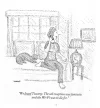Jirit: I certainly hope the rumor is true. Please let us all know if anyone learns more about this.
Through the last edition (2013) the
Brierley guidebook weighed nearly .4 kg (or about 1/2 pound). I have seen it written (Amazon, etc.) that the forthcoming early-2014 edition will be printed on lighter paper. We will see what that means. Lighter weight paper is not always better.
However, as I carry an iPod Touch to provide everything I need along the way except a mobile phone (I have a separate EU-SIM mobile). With the exception of the
Brierley guide, every other thing I need or desire is stored on this small device. Carrying the half kg
Brierley guide is becoming and extravagance when every gram counts.
If he is not going to product the iOS app version, I wish Mr.
Brierley would at least produce a "lite" version of the book, sized smaller to fit in cargo pants pockets - like Michelin and MMD.
I see something in volume between the maps-only version and the full, philosophical version. Less insights, more information. While I value, respect, appreciate, and share his religious and philosophical insights, observations and suggestions, I would prefer not to carry them along for 800 Km or more. Perhaps making the insightful bits a detachable insert at the rear of the guide might be one answer. He could arrange it according to his standard 33 stages for cross-referencing. I detest "murdering" any book by tearing bits out as some pilgrims do. And the commentary does not strip out easily from the interleaved information at present.
From all the research and trying guides I have come across or borrowed from others, an optimum result might be a "marriage" if you will of the cartography and route information in the Michelin guide, with the current accommodation information in the Miam Miam Dodo series. A bi-lingual (FR-EN) version would be nice too. Both of these publications are French-only as I understand.
The
Brierley guide is very good, and in fact appears to be the default guide book for the
Camino Frances. But there are other fine guides out there. AND it is still frightfully heavy, The problems is that one must carry a small bookshelf with you to have all the information available.
Happy New Year!





















